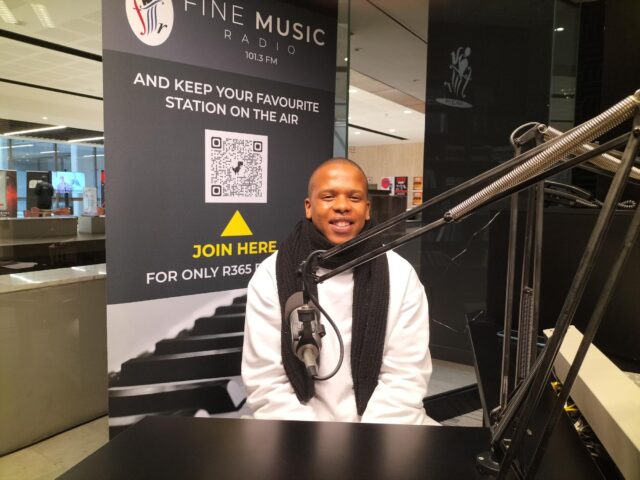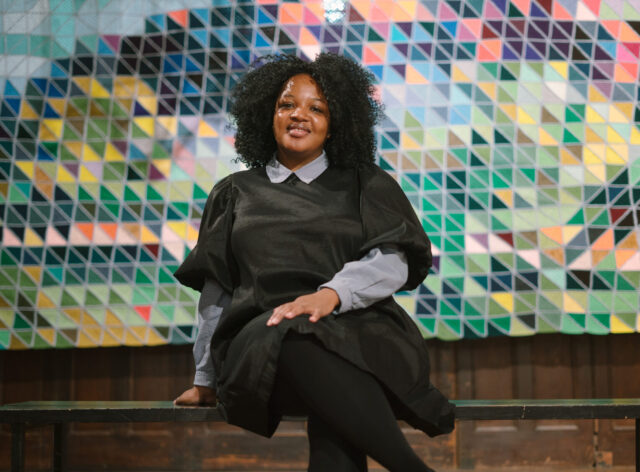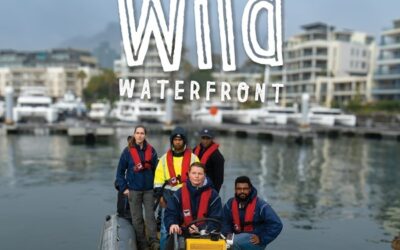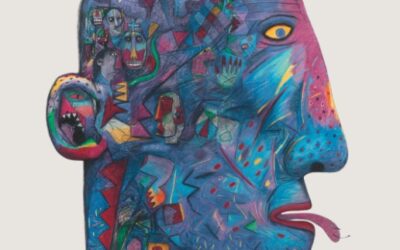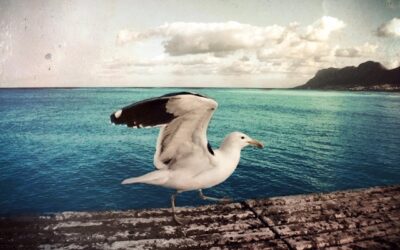It’s Creative Week and Cape Town Partnership CEO Bulelwa Makalima-Ngewana continues her creative narrative of our city.
This past Saturday was one of the most delightful, inspiring days I have spent in the Mother City in a while. One of those beautiful spring days with clear blue skies, and a contagious feeling of lightness and optimism in the city.
A city centre that I see from a different angle, like a multi-faceted diamond, every time I walk through it.
This time it was urban designer Kirsten Wilkins who offered me a new perspective through a tour of the city’s public art. The tour formed part of the launch of the fifth Creative Week that we’ve hosted as Cape Town Partnership through our Creative Cape Town programme since 2009, to highlight the everyday creativity of our citizens while most of the country’s advertising talent are in town for the Loeries Awards.
The public art tour started at the giant red ‘Olduvai’ by Gavin Younge at the Cape Town International Convention Centre. Then we walked up Heerengracht through Pier Square with sculptures by Egon Tania and Ralph Borland, onto Thibault Square and St George’s Mall, with Brett Murray’s memorable Bart Simpson sculpture and numerous other stops along the way, to finally reach the plinth on Long Street that the Western Cape Government have launched an art competition to fill. Along with the Creative Nestlings roundtable delegates that we joined there, we took a group photograph on the plinth, as though we were the art – people make places after all.
Case studies from around the world have shown that a strong public art programme can have a huge impact on a city’s social, cultural and economic vitality, and the tour was a great opportunity to see the city narrative through public art. It also yet again confirmed to me the importance of public art as a reflection of the soul of the city. Even a piece of concrete such as the piece of the Berlin Wall at the top of St George’s Mall, which was never meant to be a piece of art, has a powerful story to tell: just look at the one side full of art marks, and the other stark and grim.
As Kirsten said, the story that the public art tells is more important than the work itself. For me, this urban narrative that art can create reminds us about what is truly important, it raises our conscience, and it has the ability to pull us away from our comfort zones and force us to confront our fears in a constructive way. As we debated each piece of art, it became clear that we all view art through a lens coloured by our past experiences. Thus through debating a piece, we bring our own personal stories into the conversation, and this assists in comforting and uniting us as a people, in turn provoking a positive future.
That there is still a lot of comforting and community building to be done in Cape Town was highlighted to me when we joined the Creative Nestlings for their Roundtable discussion about public spaces. It was a little disheartening for me to hear how many of our young creatives still do not feel the right to occupy our public spaces, or even what public space is. To move forward however, we cannot stick our heads in the sand and ignore this. This is why the Cape Town Partnership’s public space programmes at Church Square and Harrington Square are so important in inviting our people back into our city, and storytelling is key to this.
During Creative Week at Harrington Square, the District Six Museum is exploring storytelling as an ongoing form of memorialisation through the District Six Design Memory Lab.
This is a project the museum has wanted to do for a while and CTP has also wanted to work with the museum for some time, which has now been enabled by funding from Woodheads and the African Arts Institute.
The lab is about drawing together the local creative community and residents in a conversation not only about the past and its traumas, but also about the future. There were workshops held at the museum last week and, on Saturday, there was a day of activities and artwork installations based on this work at Harrington Square. On Friday there will be a smaller event between 11am and 2pm to continue this process, and finally, from 11am to 2pm on Saturday, there will be a big celebration, with performances, games, art making, storytelling and installations. Everyone is invited to come and engage and share their stories.
Although this is a temporary intervention, the thing for me about stories vs monuments is that stories live on in people and in the telling. For instance, a story that came up in the workshop was that when District Six was levelled, and the people and pigeons scattered, the pigeons eventually came back but the residents did not. Thus they became a symbol of hope. I will never look at those pigeons in the East City the same way again! Hopefully this is the beginning of many collaborations between us and the museum.
Another project that we are facilitating in the East City through our Neighbourhood Communication Project is a collaboration with Michaelis School of Fine Art. Some 70 second-year Discourse of Art students have been challenged to break out of their comfort zones, and make artworks that question their own creative process and engage with their surroundings. You’ll have to look at the Creative Week website for the full programme – there are so many – but there is a group handing out awards to passers-by, another scrubbing a section of pavement, another watching people using binoculars, yet another broadcasting the sound of walking in stilettos… I love that in this way, the city is being used as a playground and an urban lab, and that everyone who will encounter one of these wacky interventions will have a unique story about Cape Town to share.
Having public art and public interventions increases these chances of serendipitous moments and changing our urban narratives. However, Creative Week is just a dipstick, because the festival is nothing more than a crowdsourced calendar entailing a website where anyone who can upload their event absolutely free. The fact that there are over 200 events shows how everyday creativity and innovation are absolutely inherent in our city, and that we are simply amplifying what already exists.
This is fuelled by the creative professionals from around the country that arrive in the city for the Loeries Awards and the range of activities around that – from the judging processes and awards ceremonies, to the Creative Scholarship and Creativity Seminar. For myself, this week also started off with judging the Ubuntu Award for the Loeries.
The Ubuntu Award celebrates the positive and sustainable impact of brands on social and natural environments. I am always amazed at how many businesses do well while doing good, and feel privileged to be part of judging this category.
One such business doing ‘good’ is the Zeitz Museum of Contemporary Art Africa, which is where we finally ended up on Saturday for a tour of the building site with curator Mark Coetzee. The museum will be the largest contemporary art museum in Africa and the result of the extensive retrofitting of the historical Grain Silo at the V&A Waterfront. Mark explained some of the incredible architectural and sustainability aspects, but also reminded us of the historical narrative. The building is significant of South Africa’s legacy as a food basket, and used to stand right on the edge of the harbour before the land reclamation.
He then gave us a personal walkabout of the Looking Back exhibition currently showing in the museum’s temporary pavilion. Here I was once again completely shaken by Zanele Muholi’s portraits of black lesbians, many of whom had been correctively raped, all ‘looking back’ with a proud unflinching gaze. These days buying a real book is very rare for me since the advent of Kindle, but I could not leave without Zanele’s new monograph, Faces and Phases 2006-14.
“My photography is a therapy to me,” writes Zanele. “I want to project publicly, without shame that we are bold, black, beautiful/handsome, proud individuals. It heals me to know that I am paving the way for others who, in wanting to come out, are able to look at the photographs, read the biographies and understand that they are not alone. That is an elixir for me.”
My city is an elixir for me. I truly urge you to go out there and participate in celebrating our creativity and refreshing your narrative of our beautiful but complex city.
This article first appeared in The Cape Times. Bulelwa Makalima-Ngewana is CEO of Cape Town Partnership. Talk to her @darksjokolade




